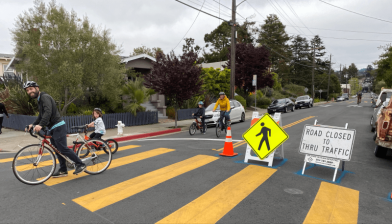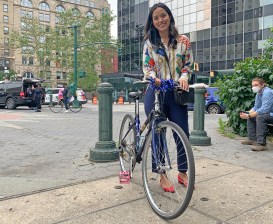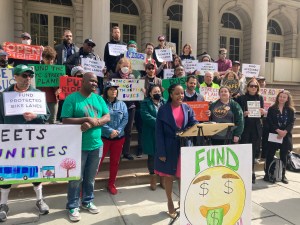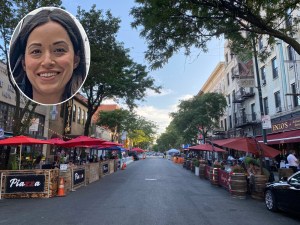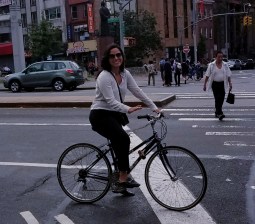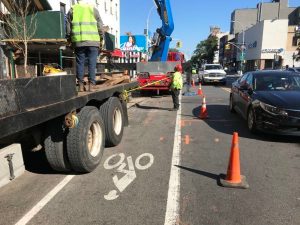CARLINA RIVERA: Here’s Why My Open Streets Bill Will Make NYC a ‘Model’ for the Nation
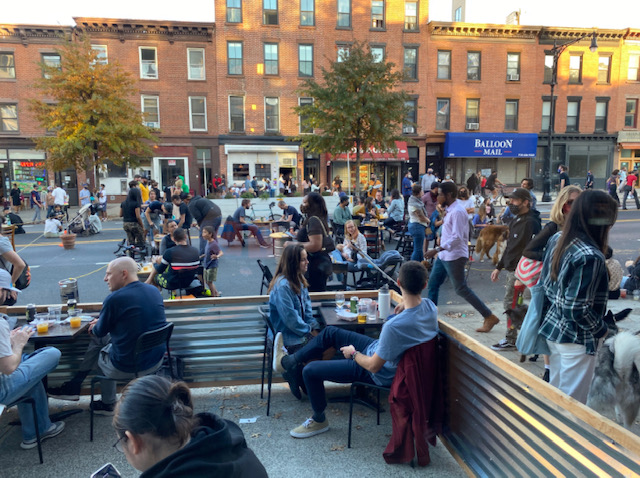
The City Council passed legislation this week making the city’s open streets program permanent and adding new provision to ensure its success. We asked Council Member Carlina Rivera to talk to you about it.
In April of last year, right as we entered the height of the pandemic and the corresponding shutdown, it quickly became clear that we needed more space for socially distanced recreation and for keeping ourselves healthy — both mentally and physically. Aside from our essential workers, most New Yorkers were hunkered down indoors, and we all know how limited our space is in this city. Staying inside, for however long it was going to take, would be incredibly challenging for a multitude of reasons.

That’s when I first introduced legislation in the Council to launch an emergency open streets program, the idea being that we could close off certain streets to vehicular traffic and give that space to the people. Thankfully, the Department of Transportation listened and worked with the Council to launch open streets in record time for the agency. It was a huge deal for New Yorkers to be able to get outside without having to travel far from their homes, and just having the space at all ended up being a blessing for folks of all ages all over the city to enjoy.
But the real success showed itself in what everyday New Yorkers did with their new car-free spaces, and that’s what prompted me to take the original open streets legislation a step further with Int. 1933-A, which will make open streets permanent, but also ensure that many of the issues with the current program are addressed.
If you’ve spent any time in my district in the last year — especially on Avenue B — then you’ve seen firsthand the potential of an Open Streets program led and supported by community members. So how did they do it? A group of my constituents came together to launch a volunteer group called the Loisaida Open Streets Community Coalition. Every day, they’d set up and take down barriers, liaise with city agencies, and organize countless activities and events for our community. They even inspired other groups across the city, and we’ve seen similar success on streets like Vanderbilt Avenue and Berry Street in Brooklyn, as well as 34th Avenue in Queens.
We’ve seen Zumba classes, arts and crafts, English lessons and just kids learning how to ride a bike on our open streets, and all of it has been community-driven — everyday New Yorkers have taken the helm.

The takeaway? Open streets programming thrives when communities lead the charge — but these open streets need to be approached with equity, resources, flexibility, and staffing) to succeed. As many of the open streets volunteers return to jobs in offices this summer, the constant barrier monitoring and local events that our best open streets provide will become more difficult to maintain.
So now, it’s on us as legislators to expand and support these successful models citywide, and most crucially, with appropriate resources. Here’s how we’ll do it:
- We’ll require DOT to manage or provide resources or staffing to a minimum of 20 open streets in areas that would be otherwise underserved.
Right now, we have limited open streets set up throughout the five boroughs. But with DOT required to provide staffing and funding to 20 open streets in under-resourced neighborhoods, as well as applicant mentorship and shared resources from well-funded operators, we can expand on the models we already have to strategically and equitably place open streets throughout the city. - We’ll provide open street operators with much needed flexibility.
Right now, open streets come with a one size fits all approach – the same barriers, the same street set up, and that’s it. With our legislation, DOT will be required to develop standards so communities can install street furniture, remove street parking, or even operate an open street 24 hours, seven days a week. - We’re ensuring that applicants are protected from liability in daily operations and speeding up the permitting process for events.
The activities that occur on open streets have inspired artists and entrepreneurs to bring their creativity to our streets, but unfortunately city agencies have not been as clear about how that process will continue in the future. Our legislation ensures that an expeditious process will be created, and that volunteers will not be personally liable for daily operations work setting up and removing barriers on open streets. - We’ll implement a real process for conversion of open streets to streets with permanent pedestrianization.
DOT will now be required to annually evaluate and report on any existing open streets to determine if any could benefit from a permanent suite of street changes. These include, but are not limited to, conversions into a shared street or pedestrian plaza, the addition of bicycle parking, signage, street markings, bollards or street barriers, tree plantings, parking removal, street furniture, and accessibility improvements, including raising of the street grade. And these conversions would satisfy benchmarks established in the Streets Master Plan, allowing for a more effective community-led transition to a more pedestrian friendly city.
With this legislation passed, I’m excited for the future of open streets. That doesn’t mean there aren’t still challenges ahead. City agencies must now take greater ownership in these efforts and swiftly respond to people who have committed vandalism and physically and verbally threatened open streets volunteers. We need Mayor de Blasio to expand on the $4 million he committed in this year’s budget to open streets operations, and to start sending out his new City Cleanup Corps workers into communities to help keep open streets barriers set up and our streets free of trash.
But we can’t lose this momentum. Open Streets have given us the chance to rethink what is possible for our streets, and to do so in record time. We need to stop thinking about the incremental, and start thinking big as we look towards New York’s recovery. And I think expanding the open streets model of quick-build pilots for pedestrian-focused infrastructure is the way to do it.
We can transform the way our city works for everyday New Yorkers. We just need the imagination to realize it.
Carlina Rivera is a member of the City Council for the Second District in Manhattan, and the sponsor of Int. 1933-A. Follow her on Twitter @carlinarivera.
